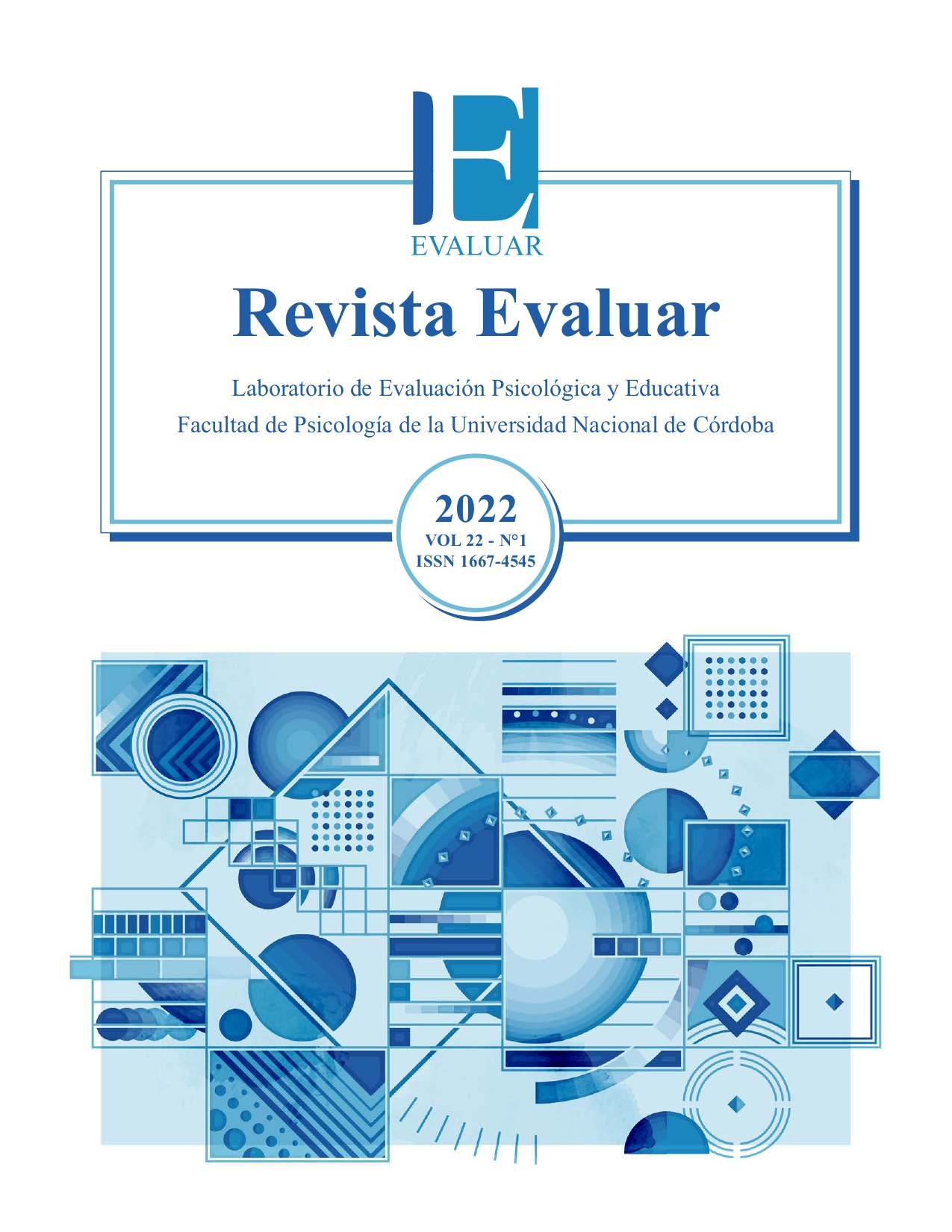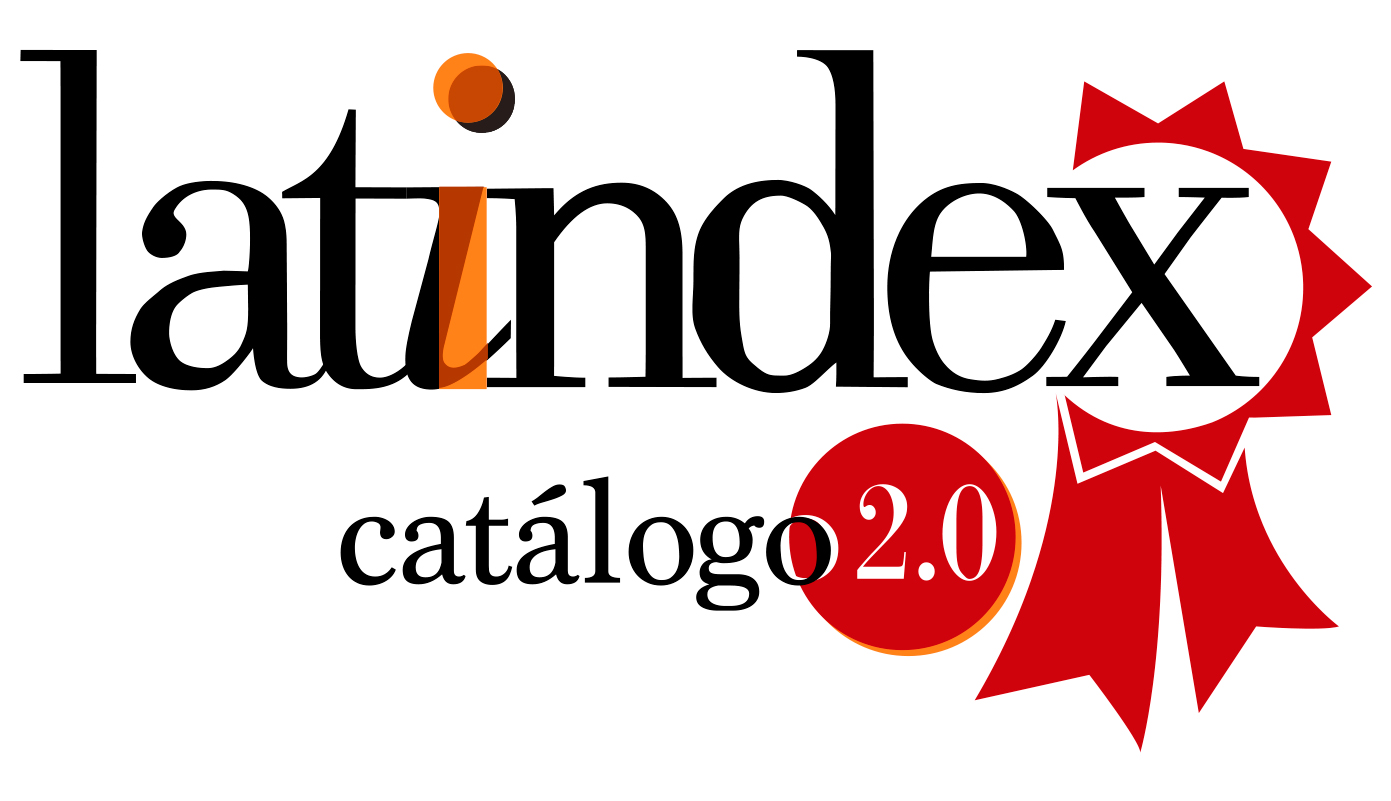Psychometric properties of the Office Gossip Scale in Puerto Rico
DOI:
https://doi.org/10.35670/1667-4545.v22.n1.37443Keywords:
gossip, confirmatory factor analysis, psychometrics, office gossip, adaptationAbstract
This research examines the psychometric properties of the Office Gossip Scale Spanish (adapted version) in a sample of 150 Puerto Rican working adults. It also evaluates its internal consistency, Cronbach’s alpha, composite reliability, McDonald’s omega coefficient, construct validity, and factor structure. The 9-item Office Gossip Scale Spanish (adapted version) has an alpha coefficient of .91, a composite reliability of .91, and an omega coefficient of .91. In addition, a confirmatory factor analysis with structural equation modeling was performed and the factor structure of the 9-item Office Gossip Scale Spanish (adapted version) was analyzed. The one-factor model showed good indicators of construct validity. The results suggest that the 9-item Office Gossip Scale Spanish (adapted version) is a reliable and valid instrument for researchers to study the phenomenon of gossip in the workplace and organizations in Puerto Rico.
Downloads
References
Brislin, R. W. (1970). Back-translation for Cross-Cultural research. Journal of Cross-Cultural Psychology, 1(3), 185-216. doi: 10.1177/135910457000100301
Brislin, R. W. (1986). The wording and translation of research instruments. In W. J. Looner & J. W. Berry (Eds.), Field methods in cross-cultural research (pp. 137-164). Thousand Oaks, CA: Sage.
Brown, T. A. (2015). Confirmatory factor analysis for applied research (2nd ed.). Nueva York, NY: Guilford Press.
Brunner, M., & Süβ, H.-M. (2005). Analyzing the reliability of multidimensional measures: An example from intelligence research. Educational and Psychological Measurement, 65(2), 227-240. doi: 10.1177/0013164404268669
Byrne, B. M. (2016). Structural equation modeling with AMOS: Basic concepts, applications, and programming (3rd ed.). Oxfordshire, UK: Routledge.
Carrim, N. M. H. (2019). Minorities’ experiences office gossip. SA Journal of Industrial Psychology, 45. doi: 10.4102/sajip.v45i0.1562
Creswell, J. W. (2014). Research design: Qualitative, quantitative, and mixed methods approach (4th ed.). Thousand Oaks, CA: Sage.
Deng, L., & Chan, W. (2017). Testing the difference between reliability coefficients alpha and Omega. Educational and Psychological Measurement, 77(2), 185-203. doi: 10.1177/0013164416658325
DeVellis, R. F. (2017). Scale development: Theory and applications (4th ed.). Thousand Oaks, CA: Sage.
DiFonzo, N., & Bordia, P. (2007). Rumor psychology: Social and organizational approaches. American Psychological Association. doi: 10.1037/11503-000
Dores Cruz, T. D., Balliet, D., Sleebos, E., Beersma, B., Van Kleef, G. A., & Gallucci, M. (2019). Getting a grip on the grapevine: Extension and factor structure of the Motives to Gossip Questionnaire. Frontiers in Psychology, 10. doi: 10.3389/fpsyg.2019.01190
Dores Cruz, T. D., Beersma, B., Dijkstra, M. T. M., & Bechtoldt, M. N. (2019). The bright and dark side of gossip for cooperation in groups. Frontiers in Psychology, 10. doi: 10.3389/fpsyg.2019.01374
Field, A. (2017). Discovering statistics using IBM SPSS Statistics (5th ed.). Thousand Oaks, CA: Sage.
Fonseca, M. A., & Peters, K. (2018). Will any gossip do? Gossip does not need to be perfectly accurate to promote trust. Games and Economic Behavior, 107, 253-281. doi: 10.1016/j.geb.2017.09.015
Fornell, C., & Larcker, D. F. (1981). Evaluating structural equation models with unobservable variables and measurement error. Journal of Marketing Research, 18(1), 39-50. doi: 10.2307/3151312
Goodman, L. A. (1961). Snowball sampling. The Annals of Mathematical Statistics, 32(1), 148-170. doi: 10.1214/aoms/1177705148
Hair, J. F., Black, W. C., Babin, B. J., & Anderson, R. E. (2013). Multivariate data analysis (7th ed.). London, UK: Pearson Education.
Hartung, F.-M., Krohn, C., & Pirschtat, M. (2019). Better than its reputation? Gossip and the reasons why we and individuals with “dark” personalities talk about others. Frontiers in Psychology, 10. doi: 10.3389/fpsyg.2019.01162
Hartung, F.-M., & Renner, B. (2013). Social curiosity and gossip: Related but different drives of social functioning. PLoS ONE, 8(7). doi: 10.1371/journal.pone.0069996
Kline, T. J. B. (2005). Psychological testing: A practical approach to design and evaluation. Thousand Oaks, CA: Sage.
Kline, R. B. (2016). Methodology in the social sciences. Principles and practice of structural equation modeling (4th ed.). Guilford Press.
Kong, M. (2018). Effect of perceived negative workplace gossip in employees’ behaviors. Frontiers in Psychology, 9. doi: 10.3389/fpsyg.2018.01112
Kuo, C.-C., Chang, K., Quinton, S., Lu, C.-Y., & Lee, I. (2015). Gossip in the workplace and the implications for HR management: A study of gossip and its relationship to employee cynicism. The International Journal of Human Resource Management, 26(18), 2288-2307. doi: 10.1080/09585192.2014.985329
Luján-Tangarife, J. A., & Cardona-Arias, J. A. (2015). Construcción y validación de escalas de medición en salud: Revisión de propiedades psicométricas. Archivos de Medicina, 11(3), 1-10. doi: 10.3823/1251
Martinescu, E., Janssen, O., & Nijstad, B. A. (2019). Gossip as a resource: How and why power relationships shape gossip behavior. Organizational Behavior and Human Decision Processes, 153, 89-102. doi: 10.1016/j.obhdp.2019.05.006
Michelson, G., Van Iterson, A., & Waddington, K. (2010). Gossip in organizations: Contexts, consequences, and controversies. Group & Organization Management, 35(4), 371-390. doi: 10.1177/1059601109360389
Montero, I., & León, O. G. (2007). A guide for naming research studies in psychology. International Journal of Clinical and Health Psychology, 7(3), 847-862. Retrieved from http://www.aepc.es/ijchp/GNEIP07_es.pdf
Richaud de Minzi, M. C. (2008). Nuevas tendencias en psicometría. Revista Evaluar, 8(1), 1-19. doi: 10.35670/1667-4545.v8.n1.501
Schaufeli, W. B., Bakker, A. B., & Salanova, M. (2006). The measurement of work engagement with a short questionnaire. Educational and Psychological Measurement, 66(4), 701-716. doi: 10.1177/0013164405282471
Schmidt, G. B. (2010, April). The effects of office gossip on workplace cognitions and behaviors. Annual Conference of the Society of Industrial-
Organizational Psychology. Atlanta, Georgia, Estados Unidos. Retrieved from https://www.siop.org
Schmidt, G. B. (2011). Office gossip as an informational source. Annual Meeting of the Academy of Management. San Antonio, Texas, USA. Retrieved from https://aom.org
Shapiro, S. S., & Wilk, M. B. (1965). An analysis of Variance Test for Normality (complete samples). Biometrika, 52(3/4), 591. doi: 10.2307/2333709
Shi, D., Maydeu-Olivares, A., & Rosseel, Y. (2020). Assessing fit in ordinal factor analysis models: SRMR vs. RMSEA. Structural equation modeling: A Multidisciplinary Journal, 27(1), 1-15. doi: 10705511.2019.1611434
Tabachnick, B. G., & Fidell, L. S. (2013). Using multivariate statistics (6th ed.). London, UK: Pearson Education.
Vélez-Vega, A. (2021). Psychometric properties of the 8-item perception of organizational rumor scale (PORS) in a Puerto Rican sample. Informes Psicológicos, 21(1), 57-71. doi: 10.18566/infpsic.v21n1a04
Waddington, K. (2014). Gossip and Organizations. Oxfordshire, UK: Routledge.
Wu, J., Balliet, D., & Van Lange, P. A. M. (2016). Gossip versus punishment: The efficiency of reputation to promote and maintain cooperation. Scientific Reports, 6(1). doi: 10.1038/srep23919
Downloads
Published
How to Cite
Issue
Section
License
Copyright (c) 2022 Abner Vélez Vega

This work is licensed under a Creative Commons Attribution 4.0 International License.
Revista Evaluar aplica la Licencia Internacional de Atribuciones Comunes Creativas (Creative Commons Attribution License, CCAL). Bajo esta licencia, los autores retienen la propiedad de copyright de los artículos pero permiten que, sin que medie permiso de autor o editor, cualquier persona descargue y distribuya los artículos publicados en Evaluar. La única condición es que siempre y en todos los casos se cite a los autores y a la fuente original de publicación (i.e. Evaluar). El envío de artículos a Evaluar y la lectura de los mismos es totalmente gratuito.




_(3).jpg)



.jpg)



